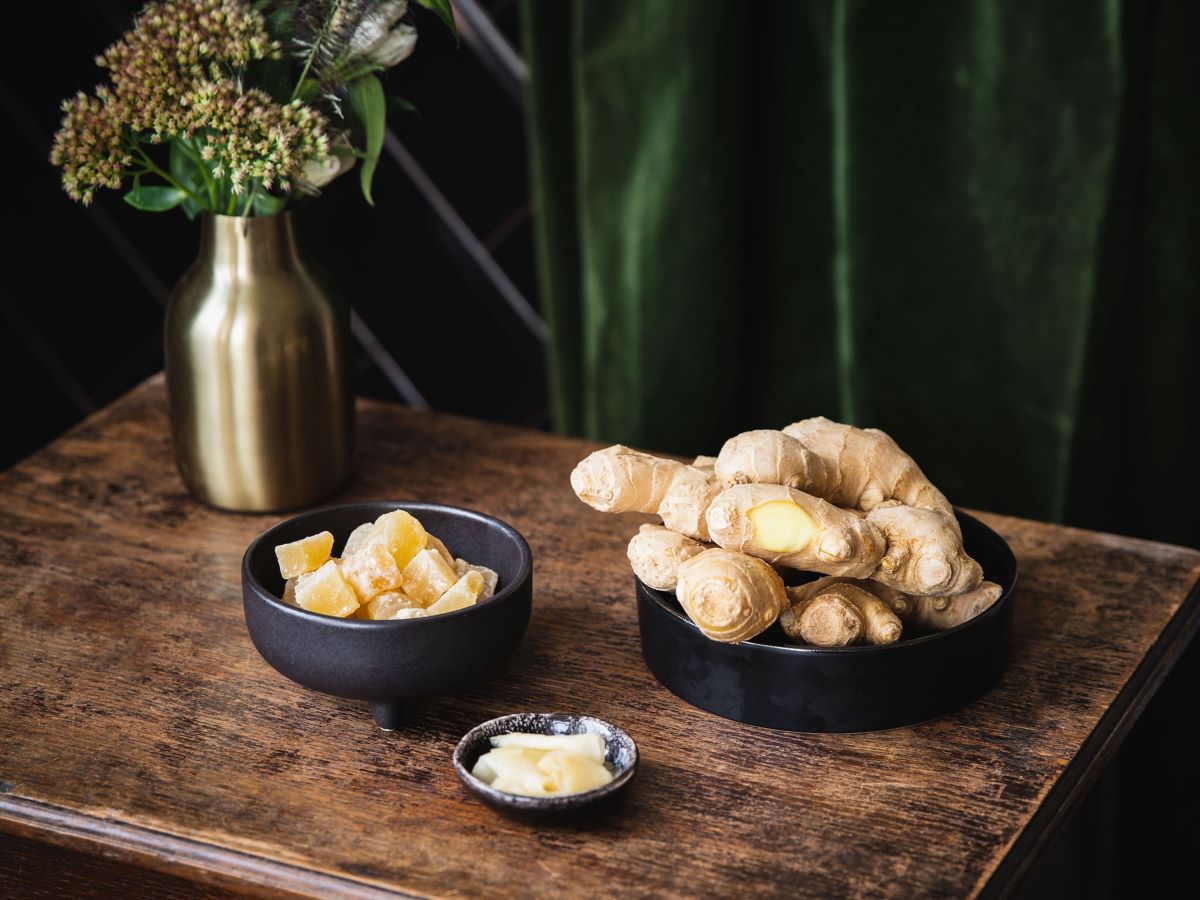

Articles
How To Store Ginger At Home
Modified: January 22, 2024
Learn the best techniques for storing ginger at home in this informative article. Discover the tips and tricks to keep your ginger fresh and flavorful for longer.
(Many of the links in this article redirect to a specific reviewed product. Your purchase of these products through affiliate links helps to generate commission for Storables.com, at no extra cost. Learn more)
Introduction
Ginger is a versatile and aromatic spice that adds a distinctive flavor to countless dishes. Whether you use it in soups, stir-fries, desserts, or even beverages, having fresh ginger on hand is essential for any home cook. But how do you ensure that your ginger stays fresh and flavorful for as long as possible? In this article, we will guide you through the process of storing ginger at home, so you can enjoy its vibrant taste year-round.
Choosing ginger:
Before you start storing ginger, it’s important to select the right kind of ginger root. Look for ginger with smooth, firm skin, free from blemishes or mold. The skin should be thin and light brown, with a fresh, spicy aroma. Avoid ginger that feels soft or spongy, as it may be past its prime.
Key Takeaways:
- Choose high-quality ginger with firm skin and a fresh aroma for optimal flavor and longevity. Properly prepare and store ginger in the refrigerator to maintain its freshness and enjoy its delightful presence in your favorite recipes.
- Consider freezing ginger for a long-term supply without compromising its taste and aroma. Label and date your stored ginger, and regularly inspect for spoilage to ensure you always have this versatile spice on hand for your culinary creations.
Read more: How To Store Ginger In Fridge
Choosing the Right Ginger
When it comes to selecting ginger for storage, it’s important to choose high-quality ginger roots to ensure optimal flavor and longevity. Here are some tips to help you choose the right ginger:
- Look for fresh ginger: Select ginger that has a smooth, firm skin. Avoid ginger with wrinkles or soft spots, as these are signs of age or decay. Fresh ginger should also have a spicy, aromatic scent.
- Check the skin: The skin of the ginger root should be thin and light brown. Avoid ginger with dark or moldy spots, as this indicates spoilage.
- Consider the size: Choose ginger roots that are plump and have a good amount of weight. Avoid small, shriveled roots, as they may lack flavor.
- Opt for organic ginger: If possible, choose organic ginger to minimize exposure to pesticides.
Remember that the quality of ginger you select will directly impact its shelf life and overall flavor. By choosing the right ginger, you set yourself up for successful storage and delicious culinary creations.
Harvesting Ginger
Did you know that you can grow your own ginger at home? Harvesting ginger not only ensures a fresh supply but also allows you to experience the satisfaction of growing your own food. Here’s how to harvest ginger:
- Start with a suitable ginger root: Begin by obtaining a fresh ginger root from a reputable source. Look for a plump root with buds or “eyes” on it.
- Prepare a growing container: Choose a container with good drainage, as ginger doesn’t tolerate waterlogged conditions. Fill the container with well-draining potting soil.
- Pre-soak the ginger root: Before planting, soak the ginger root in water overnight to awaken its dormant buds.
- Plant the ginger root: Place the ginger root vertically in the soil, with the buds facing upwards. Cover it with about an inch of soil.
- Place in a warm, humid spot: Ginger thrives in warm, humid conditions. Find a spot in your home or garden that receives indirect sunlight and maintains a temperature between 75-85°F (24-29°C).
- Water regularly: Keep the soil consistently moist but not saturated. Avoid overwatering, as excessive moisture can lead to rotting.
- Be patient: It takes time for ginger to grow. In about 2-3 weeks, you should start seeing shoots emerge from the soil.
- Harvest ginger when needed: Once the ginger plants have fully grown, you can carefully dig up the ginger rhizomes when needed. Gently remove the soil and cut off the desired amount of fresh ginger.
By harvesting ginger at home, you have full control over the growing conditions and can enjoy the satisfaction of using homegrown ginger in your recipes.
Preparing Ginger for Storage
Before storing ginger, it’s important to properly prepare it to ensure maximum freshness and longevity. Follow these steps to prepare ginger for storage:
- Wash the ginger: Start by rinsing the ginger under cool, running water. Gently scrub the surface with a brush or your fingers to remove any dirt or debris.
- Dry the ginger: Pat the ginger dry with a clean towel or paper towel. Excess moisture can cause the ginger to spoil quickly, so it’s important to ensure it’s completely dry.
- Trim any blemishes: Inspect the ginger for any blemishes or damaged areas. Cut off any bruised or moldy parts using a sharp knife.
- Leave the skin intact: It’s best to leave the skin on the ginger when storing, as it helps protect the moisture and flavor. However, if you prefer to peel the ginger, you can do so carefully using a vegetable peeler or a spoon.
- Slice or grate if needed: If you plan on using ginger slices or grated ginger in your recipes, you can slice or grate it at this point. Alternatively, you can store the ginger whole if you prefer.
By properly preparing the ginger before storage, you ensure that it remains fresh and ready to use whenever you need it in your culinary creations.
Storing Ginger Whole
If you prefer to store ginger in its whole form, follow these steps to keep it fresh and flavorful:
- Wrap in paper towels: Place the whole ginger root in a paper towel. This helps absorb excess moisture and prevents the ginger from drying out.
- Place in a resealable bag: Place the wrapped ginger in a resealable bag or airtight container. Squeeze out any excess air before sealing to create a favorable environment for storage.
- Store in the refrigerator: Place the bag or container in the vegetable drawer of your refrigerator. The cool temperature and humidity in the fridge will help prolong the shelf life of the ginger.
- Check regularly: Periodically check the ginger for any signs of spoilage or sprouting. Remove any ginger that has gone bad to prevent it from affecting the rest of the batch.
- Replace paper towels if needed: If the paper towel becomes damp, replace it with a fresh one to maintain optimal storage conditions.
By storing ginger whole in the refrigerator, you can extend its shelf life for up to several weeks. Just make sure to check on it regularly and remove any spoiled pieces to preserve the freshness.
Read more: How To Store Garlic And Ginger
Storing Ginger Slices
If you prefer to store ginger in sliced form for easy access, follow these steps to ensure its longevity:
- Slice the ginger: Using a sharp knife, slice the ginger to your desired thickness. For cooking purposes, thinner slices are usually more convenient.
- Blanch the slices (optional): To help preserve the flavor and texture of the ginger slices, you can blanch them briefly in boiling water for about 30 seconds. This step prevents enzyme activity that can cause the ginger to become bitter over time.
- Dry the slices: After blanching or if you choose not to blanch, pat the ginger slices dry with a clean towel or paper towel. Excess moisture can lead to spoilage and mold growth.
- Place in an airtight container: Transfer the ginger slices to an airtight container or resealable bag. Ensure the container is tightly sealed to prevent air and moisture from entering.
- Store in the refrigerator: Place the container of ginger slices in the refrigerator. The cool temperature helps to maintain the freshness and flavor of the ginger.
- Label and date the container: To avoid confusion and ensure you use the ginger slices within a reasonable timeframe, label the container with the date of storage.
- Use within a week: Sliced ginger stored in the refrigerator is best used within a week for optimal flavor and quality.
By following these steps, you can conveniently store ginger slices and have them readily available for your culinary needs.
Store ginger in the refrigerator in a resealable plastic bag with a paper towel to absorb moisture, or freeze it for longer storage. This will keep it fresh for several weeks.
Storing Ginger Paste
Ginger paste is a convenient way to add ginger flavor to your dishes with ease. Here’s how you can store ginger paste:
- Prepare the ginger paste: To make ginger paste, peel and roughly chop fresh ginger. Blend it in a food processor or blender until it forms a smooth paste. You can also add a small amount of water or oil to help with the blending process.
- Transfer to ice cube trays: Spoon the ginger paste into ice cube trays, filling each compartment about three-quarters full. Leave a little space for expansion during freezing.
- Freeze the ginger paste: Place the ice cube trays in the freezer and allow the ginger paste to freeze completely. This usually takes a few hours.
- Pop out the ginger paste cubes: Once the ginger paste cubes are fully frozen, remove them from the ice cube trays. Store them in a freezer-safe container or resealable bag.
- Label and date the container: Remember to label the container or bag with the date of storage to keep track of its freshness.
- Store in the freezer: Place the container of ginger paste cubes in the freezer. Ginger paste stored in the freezer can last for several months.
When you need ginger for a recipe, simply take out a ginger paste cube and thaw it. Each cube is typically equivalent to about one teaspoon of ginger. The freezing process helps preserve the flavor and texture of the ginger paste, allowing you to enjoy its freshness whenever you need it.
Storing Ginger Juice
Ginger juice is a versatile ingredient that adds a punch of flavor to various recipes. If you have excess ginger juice or want to store it for later use, follow these steps:
- Extract the ginger juice: Start by peeling a fresh ginger root and grating it finely. Once grated, squeeze the ginger using cheesecloth or a fine mesh strainer to collect the juice. You can also use a juicer or blender to extract the juice, but straining it afterwards will help remove any fibrous bits.
- Transfer to a bottle: Pour the ginger juice into a clean, airtight container or glass bottle. Ensure that the container is properly sterilized to prevent any bacterial growth.
- Seal the container: Make sure the container is tightly sealed to prevent air exposure and contamination. This helps preserve the quality and freshness of the ginger juice.
- Store in the refrigerator: Place the bottle of ginger juice in the refrigerator, as the cool temperature helps slow down the oxidation process and maintains the flavor.
- Label and date the bottle: It’s important to label the bottle with the date of storage to keep track of its freshness. Ginger juice stored in the refrigerator can typically last for up to two weeks.
When you need ginger juice for cooking or beverages, simply take out the bottle from the refrigerator and pour out the desired amount. Ginger juice adds a zesty kick to dressings, marinades, smoothies, cocktails, and many more recipes.
Remember that freshly extracted ginger juice may separate over time, with some sediment settling at the bottom of the container. Just give the bottle a good shake before using to redistribute the flavors and enjoy the potent taste of ginger.
Storing Ginger in the Freezer
Freezing ginger is a great way to extend its shelf life and have a ready supply of ginger whenever you need it. Follow these steps to store ginger in the freezer:
- Prepare the ginger: Start by washing and thoroughly drying the ginger root. You can choose to peel the ginger or leave the skin intact, depending on your preference.
- Slice or grate the ginger (optional): If you prefer to have pre-sliced or grated ginger ready for use, you can slice or grate the ginger at this stage. This allows for easy portioning when you need ginger in specific quantities.
- Wrap in plastic wrap or foil: Take the ginger pieces and wrap them tightly in plastic wrap or aluminum foil. This helps prevent freezer burn and moisture loss, which can affect the quality of the ginger.
- Place in a freezer-safe bag or container: Transfer the wrapped ginger pieces into a freezer-safe bag or airtight container. Squeeze out any excess air before sealing the bag or container.
- Label and date the bag or container: Remember to label the bag or container with the date of storage to keep track of its freshness. Frozen ginger can typically last for several months in the freezer.
- Store in the freezer: Place the bag or container of ginger in the freezer, preferably in the back where the temperature remains most consistent.
When you need ginger for a recipe, simply take out the desired amount from the freezer and return the rest to the freezer immediately. Frozen ginger can be grated or sliced directly into dishes without the need for thawing. The frozen ginger retains its flavor and can be used in various recipes, including soups, stir-fries, and baked goods.
Freezing ginger allows you to have a long-term storage option while preserving its taste and aroma, ensuring that you always have ginger on hand.
Read more: How To Store Ginger
Tips for Extending Ginger’s Shelf Life
Ginger is a versatile spice that adds a unique flavor to many dishes. To make the most out of your ginger and extend its shelf life, consider these tips:
- Store ginger properly: Proper storage is key to preserving the freshness of ginger. Whether you store it whole, sliced, as paste, or juice, make sure it is kept in an airtight container or resealable bag to prevent moisture loss and exposure to air.
- Keep it dry: Moisture can cause ginger to spoil quickly. Before storing, ensure that the ginger is dry. Pat it dry with a towel or allow it to air dry before placing it in storage.
- Refrigerate the ginger: While ginger can be stored at room temperature, it lasts longer when refrigerated. The cool temperature helps slow down the natural decomposition process and extends its shelf life.
- Avoid direct sunlight: Ginger is sensitive to light, so it’s essential to store it in a cool, dark place. Exposure to light can cause the ginger to lose flavor and potency.
- Handle ginger with care: When handling ginger, try not to leave it at room temperature for an extended period. Exposing ginger to warm temperatures can lead to mold growth and spoilage.
- Opt for freezing: If you have a large amount of ginger that you won’t use within a few weeks, consider freezing it. Freezing ginger helps retain its flavor and texture for an extended period.
- Use freezer-safe containers: When freezing ginger, use freezer-safe containers or bags to prevent freezer burn. Ensure they are tightly sealed to maintain the quality of the ginger.
- Label and date: Whether you store ginger in the refrigerator or freezer, label the containers or bags with the date of storage. This helps you keep track of freshness and ensures you use the oldest ginger first.
- Grate or slice when needed: If you frequently use ginger in grated or sliced form, consider grating or slicing it just before use. This preserves the flavor and aroma of the ginger for the best culinary experience.
- Inspect regularly: Periodically check your stored ginger for any signs of mold, dehydration, or spoilage. Remove any affected pieces promptly to prevent them from affecting the rest of the batch.
By following these tips, you can maximize the shelf life of your ginger and ensure that it remains fresh and flavorful for your culinary endeavors.
Conclusion
Ginger is a wonderful spice that adds a delightful flavor and aroma to a wide range of dishes. By storing ginger properly, you can enjoy its freshness and potency for an extended period. Whether you choose to store ginger whole, sliced, as paste, juice, or even freeze it, these methods can help prolong its shelf life and preserve its unique qualities.
When selecting ginger, choose high-quality roots with firm skin and a fresh aroma. Properly preparing the ginger by washing, drying, and trimming any blemishes is essential before storing. Storing ginger in the refrigerator, whether it’s whole, sliced, or as ginger paste or juice, helps maintain its freshness, flavor, and texture.
If you have excess ginger or want to ensure a long-term supply, consider freezing it. Freezing ginger allows you to have a readily available stock to use whenever needed, without compromising its taste and aroma.
Remember to label and date your stored ginger to keep track of its freshness. Regularly inspect your stored ginger for any signs of spoilage and remove any affected pieces promptly to prevent further deterioration.
By following these storage tips, you can extend the shelf life of ginger and ensure that you always have this versatile spice on hand for your culinary creations. So go ahead, stock up on ginger and enjoy its delightful presence in your favorite recipes!
Frequently Asked Questions about How To Store Ginger At Home
Was this page helpful?
At Storables.com, we guarantee accurate and reliable information. Our content, validated by Expert Board Contributors, is crafted following stringent Editorial Policies. We're committed to providing you with well-researched, expert-backed insights for all your informational needs.
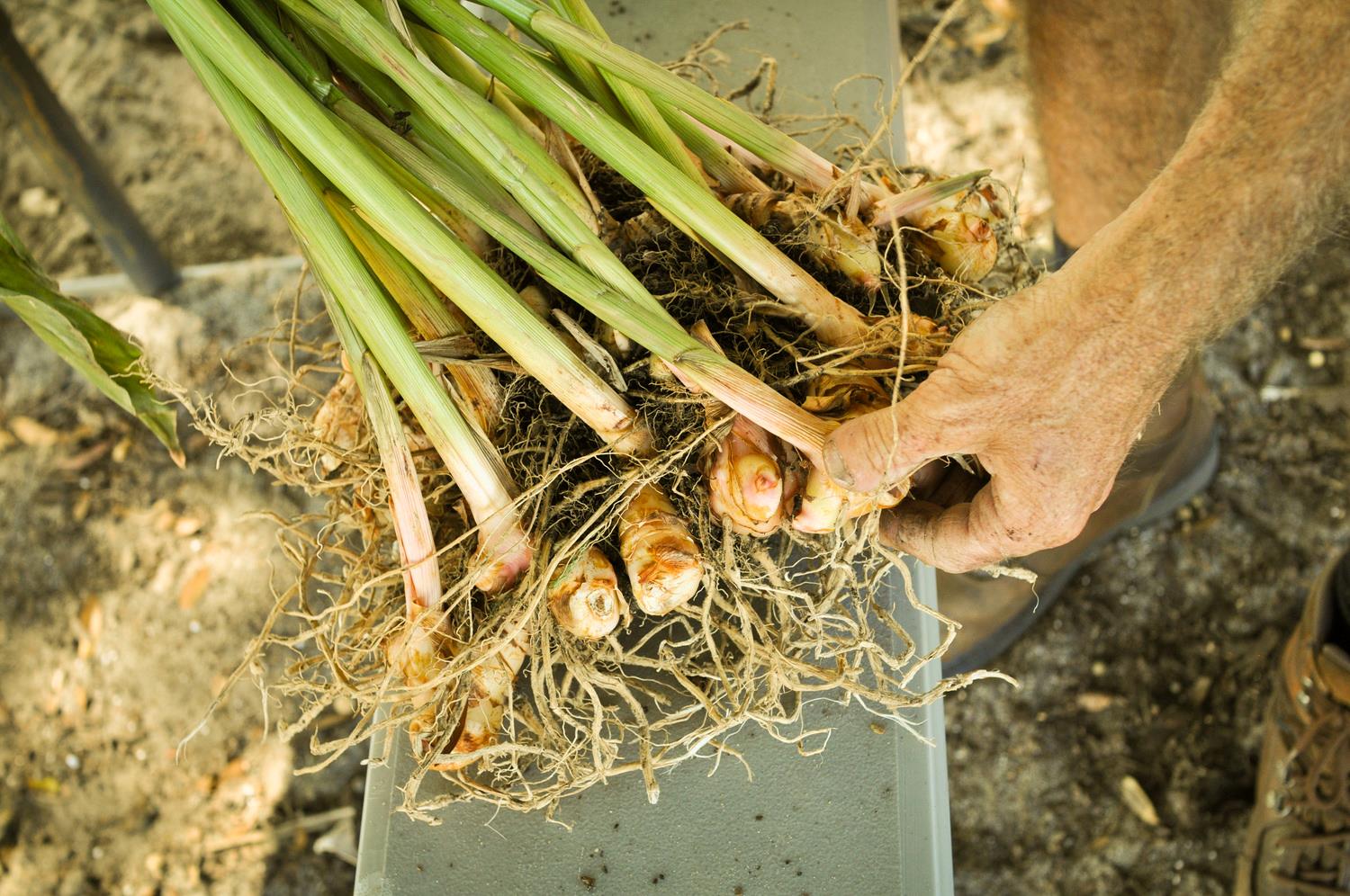
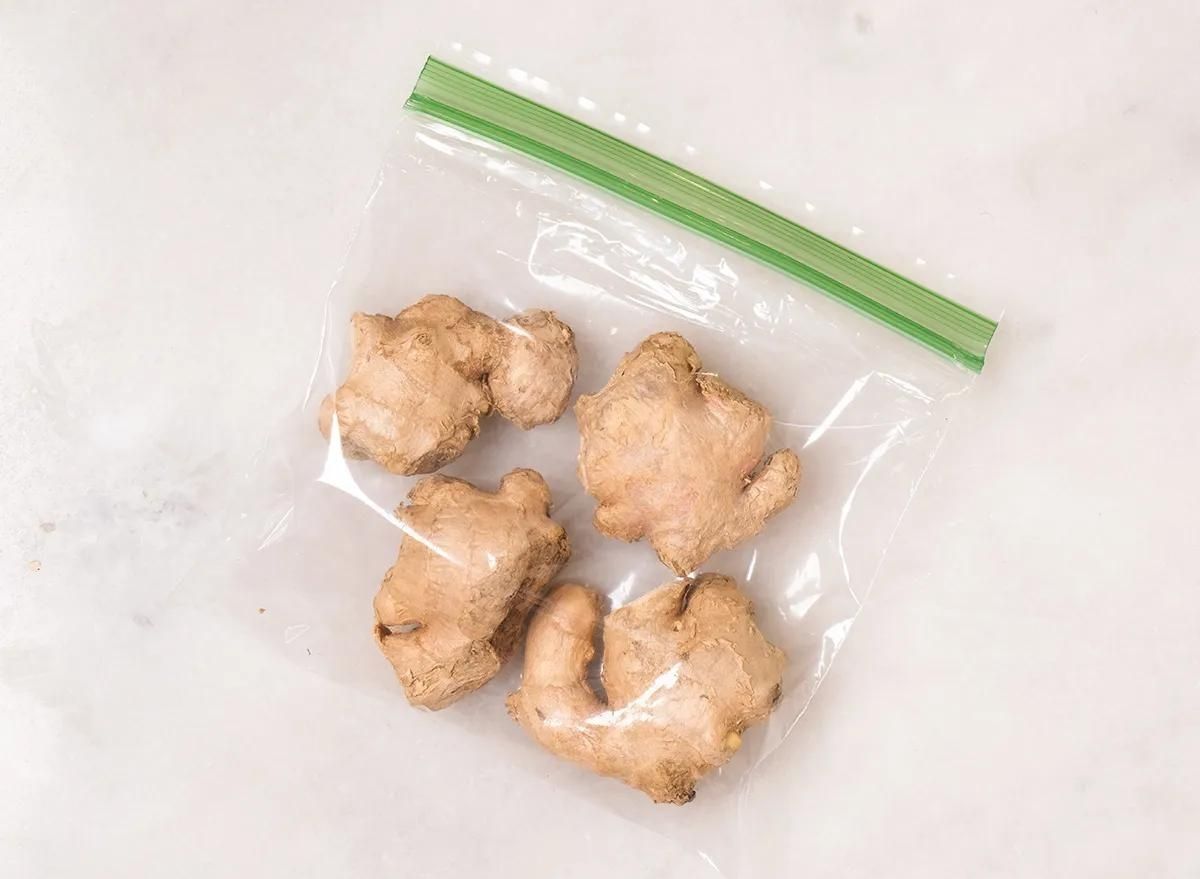
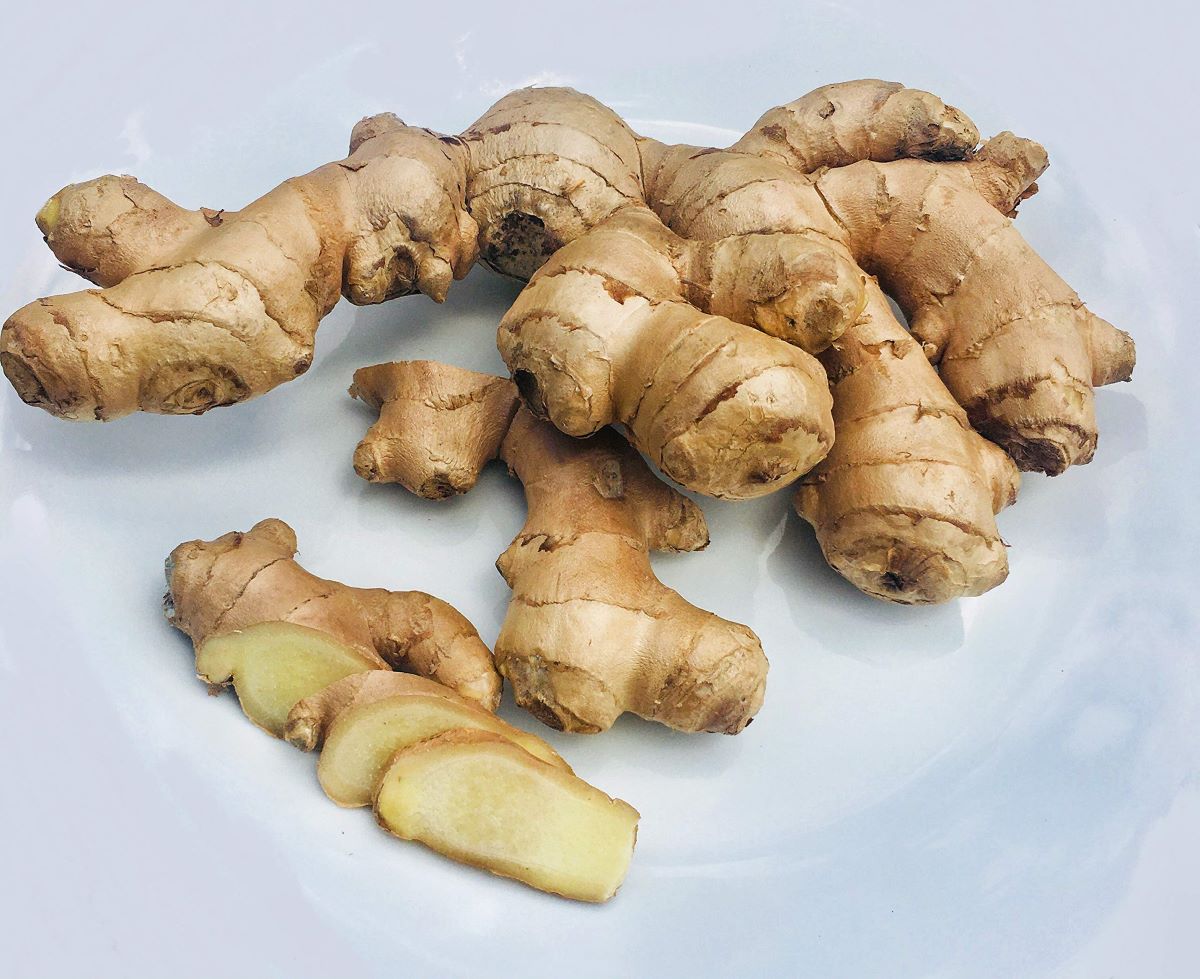

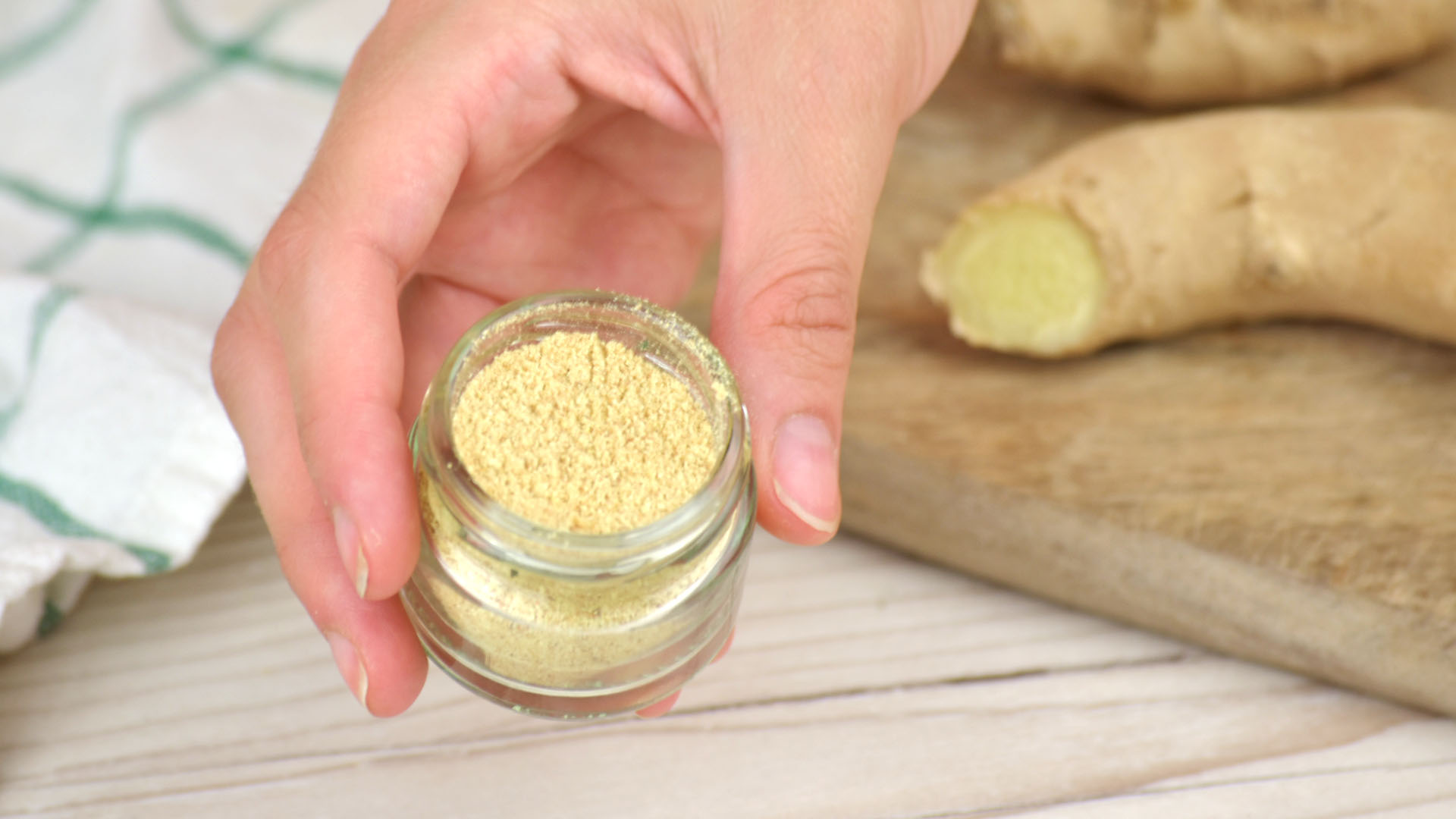
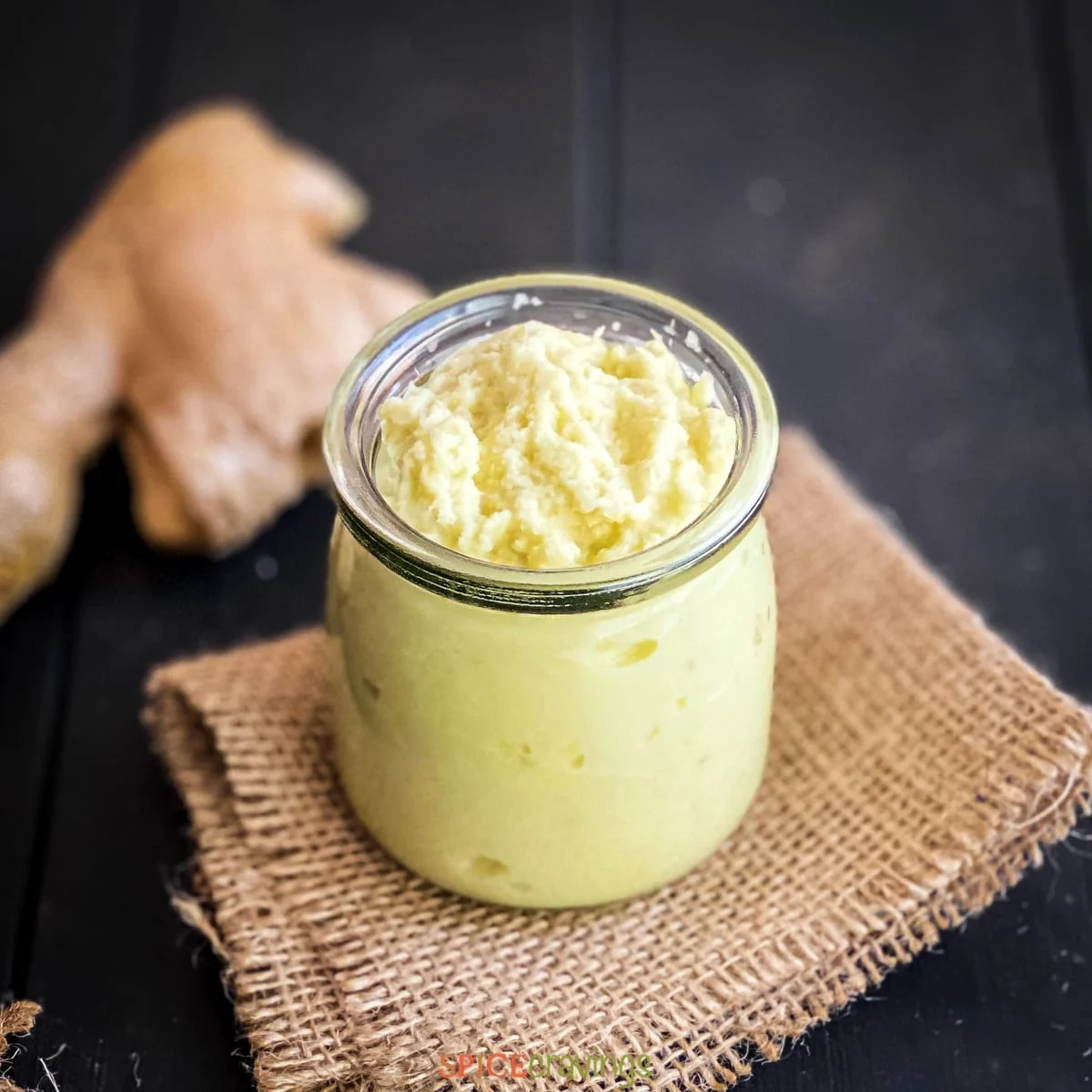
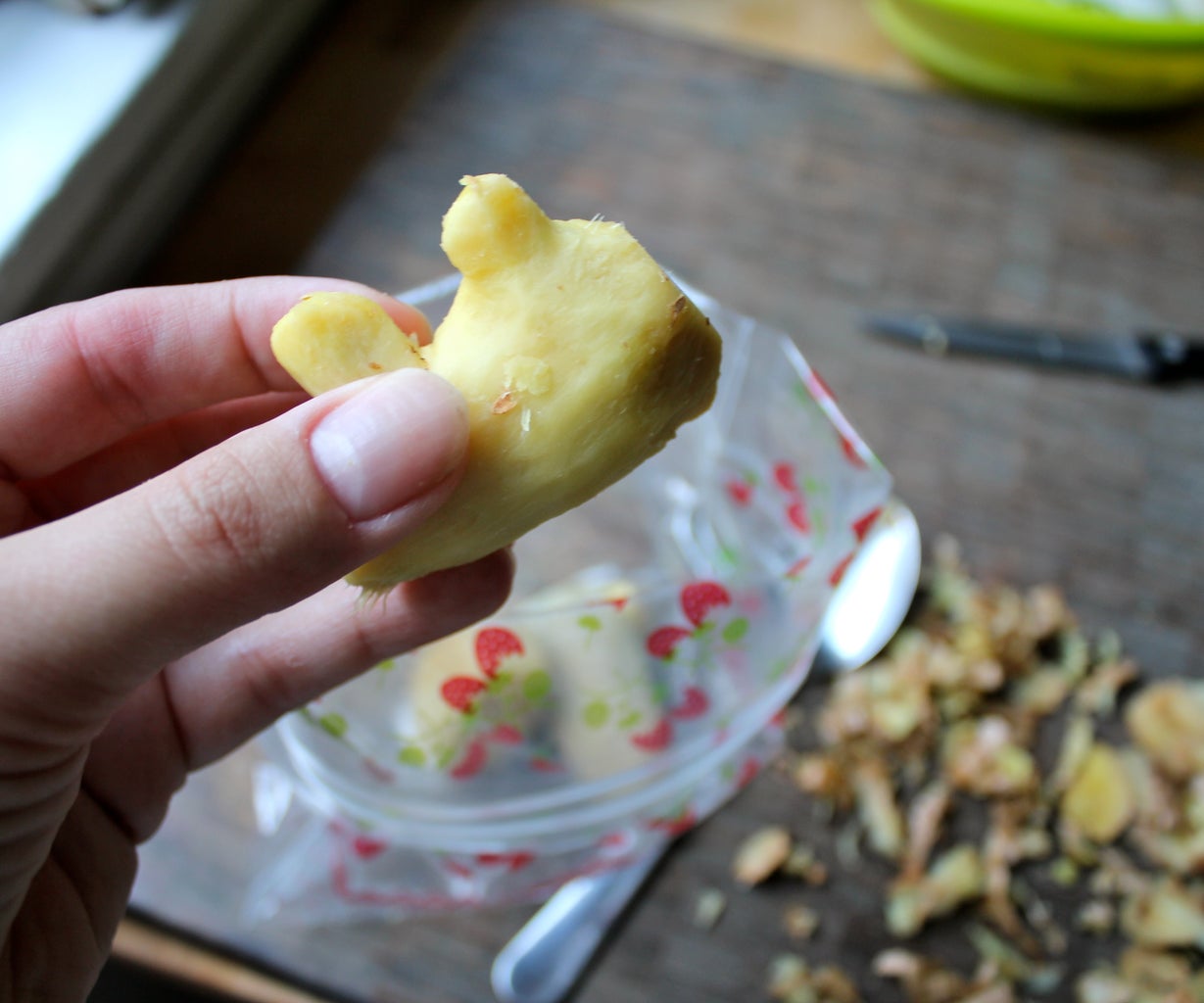
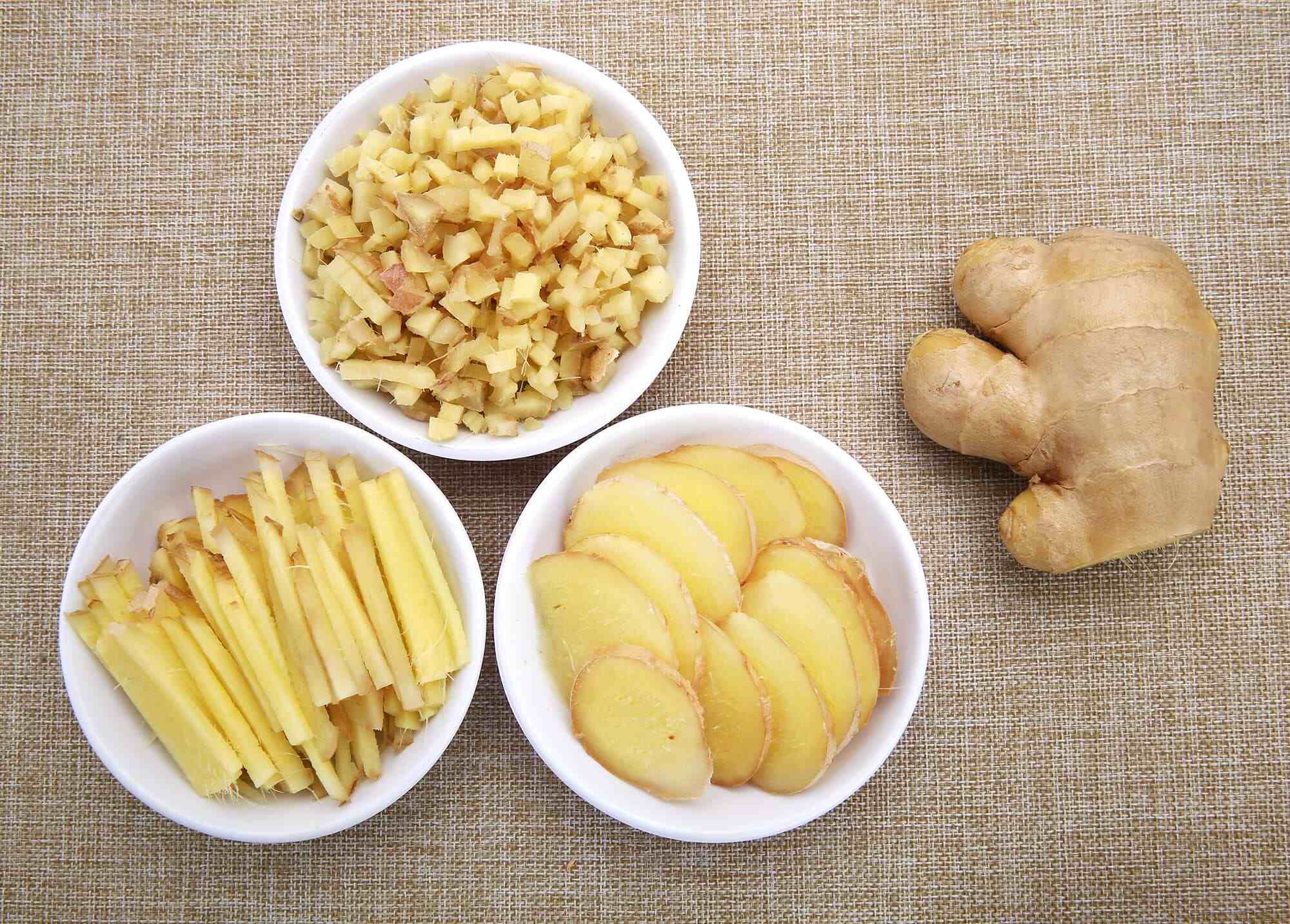
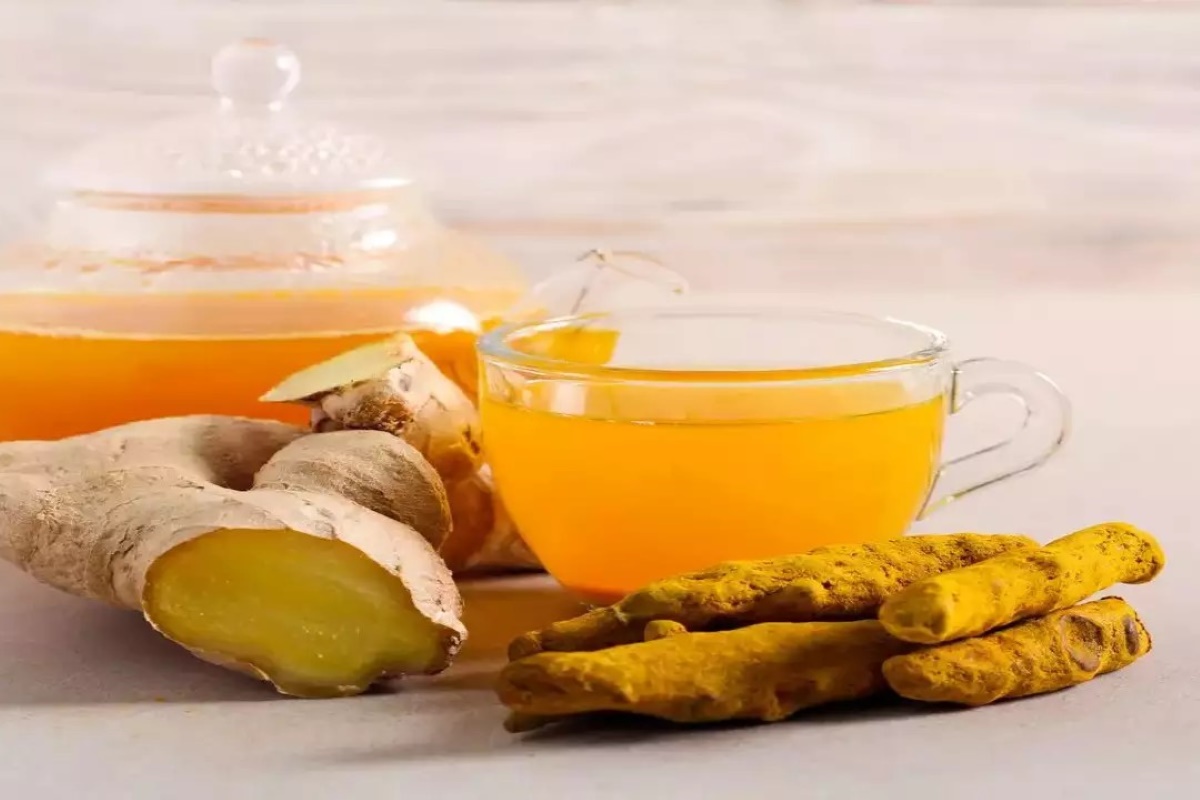
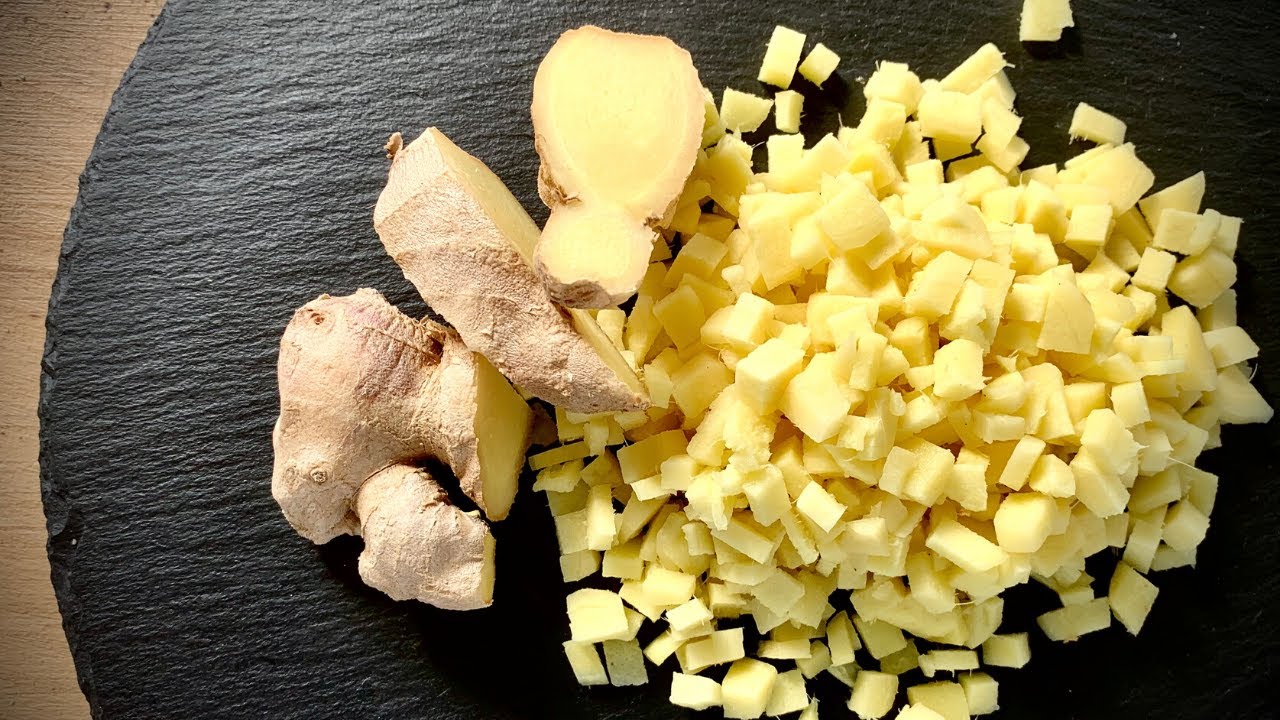
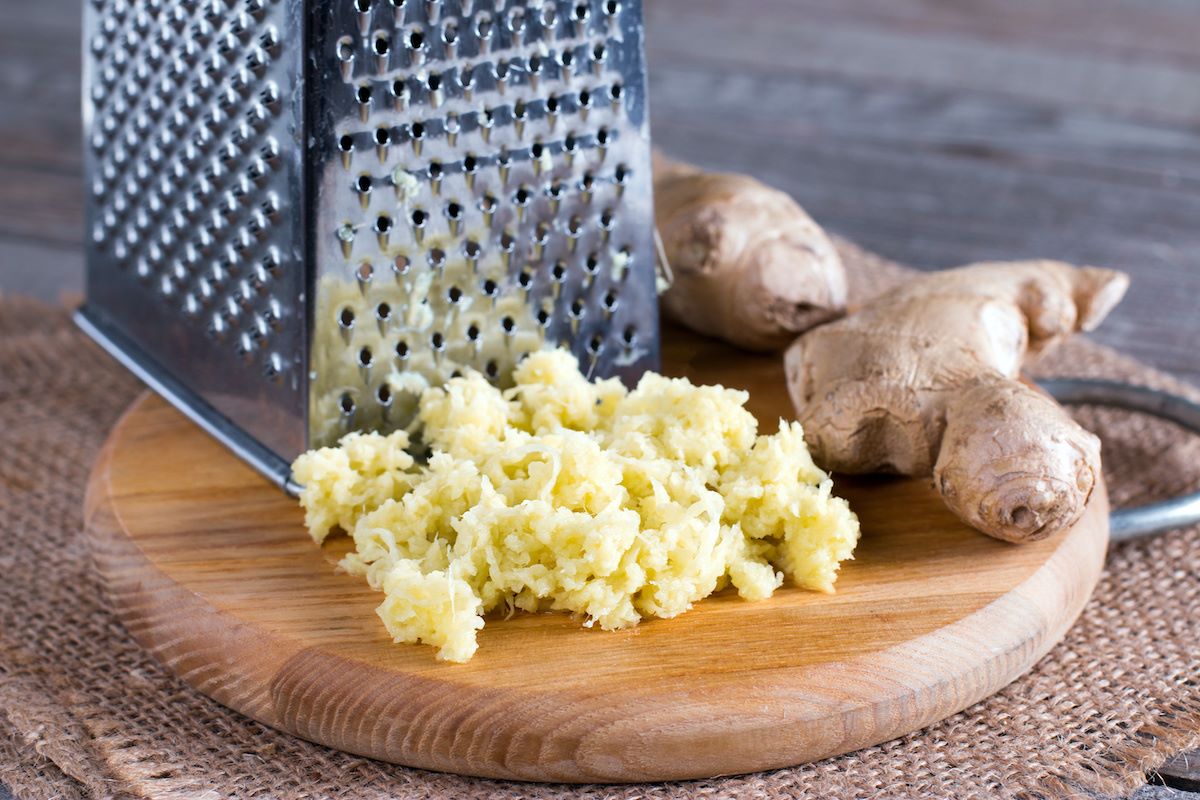
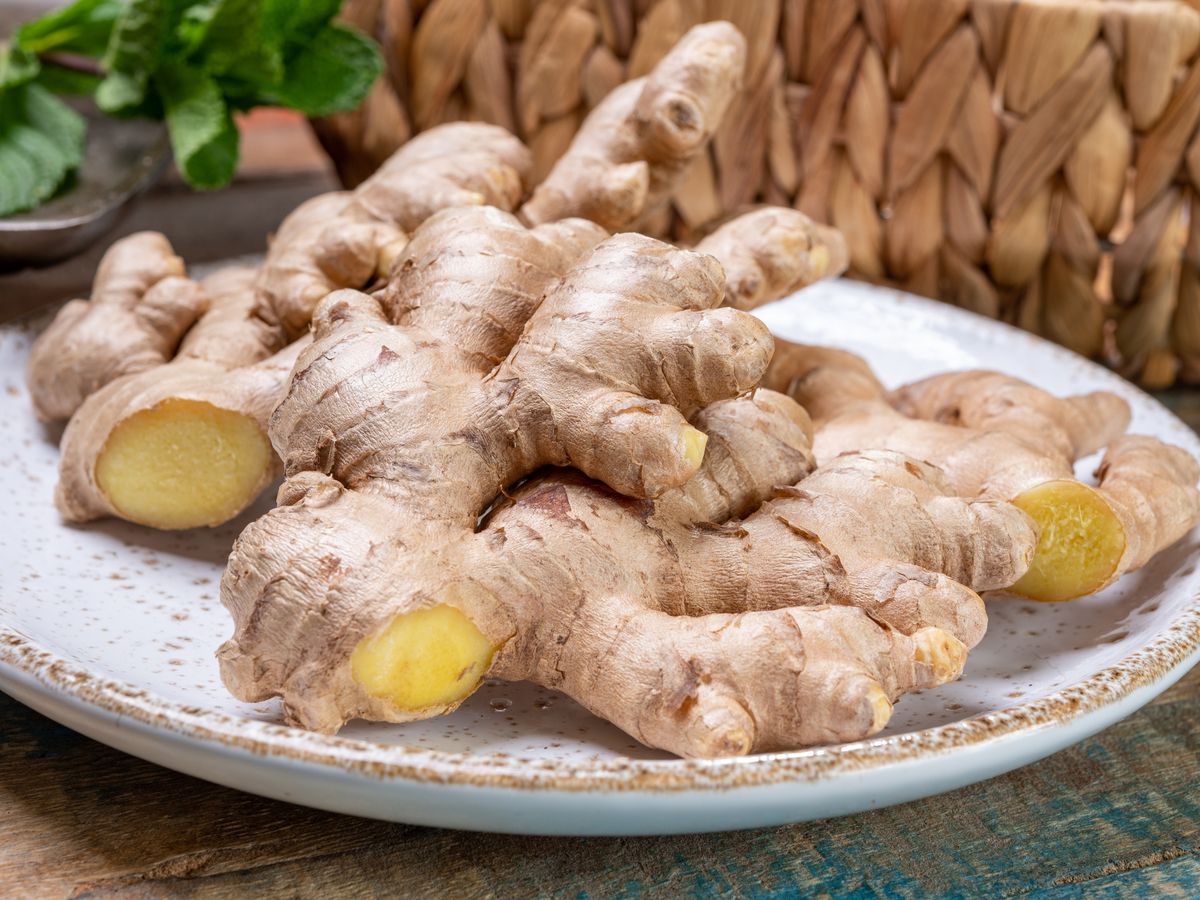


0 thoughts on “How To Store Ginger At Home”